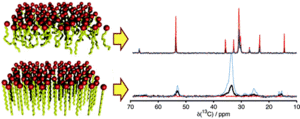HuMes seminarieserie
The Humanities and Medicine (HuMe) initiative aims at increasing interdisciplinary research collaboration between the medical faculty and the faculty of humanities. An important component in this work is the expansion of the research infrastructure available for investigators working at the interface between humanities and medical technology. Access to frontline research equipment is being made possible through collaboration with the Lund University Bioimaging Center (LBIC) which houses MR (Magnetic Resonance) scanners that can be used to make images of the human brain and body. The MR-technique makes possible investigations of what areas of the brain are involved in the processing of different kinds of words, texts, images or sound (speech, music) using the so-called functional Magnetic Resonance imaging (fMRI) technique. In order to be able to use MR-scanners in their research, however, it is important for researchers in the humanities to acquire competence in the MR-technique as well as in experimental methods and data analysis strategies used in conducting studies with the imaging equipment.
During 2012, therefore, the HuMe initiative and the network TESLA at the medical faculty will organize a seminar series in fMRI. The first few seminars will be geared to introducing the MR-technique and its applications to research in the humanities. In subsequent seminars, different investigators working with fMRI will focus on more specific research questions. The seminar series will serve as a forum for discussion for researchers interested in using the MR-technique themselves as well as for those with a more general interest in this kind of interdisciplinary research.
Suggested readings
Amaro, E and Barker, G.J. 2006. Study design in fMRI: Basic principles. Brain and Cognition 60, 220–232.Ramsey, N.F., Hoogduin, H., and Jansma, J.M. 2002. Functional MRI experiments: acquisition, analysis and interpretation of data. European Neuropsychopharmacology 12, 517–526.

Daniel Topgaard, Physical Chemistry, Lund University
Date: Thursday, November 29, 10:15 - 12:00
Venue: SOL Humanisten H428b
The structure of the brain is changing during learning processes such as language acquisition. The structural changes take place on a range of length scales, from the formation of new connections between individual neurons to the growth of entire brain regions. Magnetic resonance imaging (MRI) gives information on brain structure through measurements that can be completely non-invasive, a fact that is of particular importance for learning studies. The fundamental limits to the spatial resolution in MRI unfortunately prohibit the acquisition of images where single nerve cells can be resolved. Still, one can get microstructural information averaged over millimeter-size volume elements. This presentation gives an overview of our recent work with developing new MRI methods for utilizing the micrometer-scale motion of water to map the size, shape, density, and orientation of cells. The non-invasive character and the information made available by the new methods give them great potential for answering the question what happens to the brain on the microstructural level when studying.
